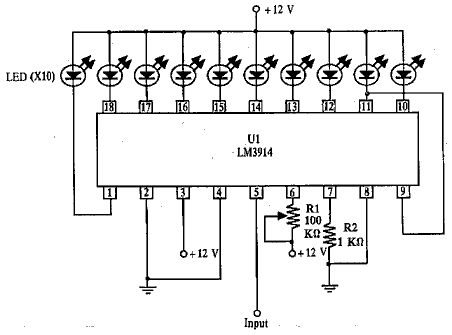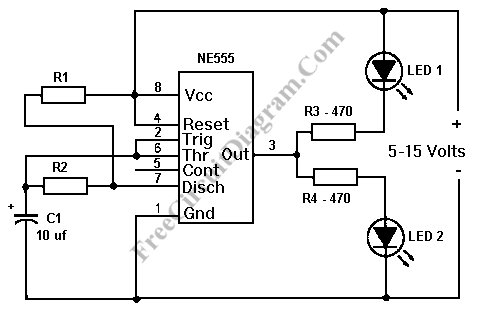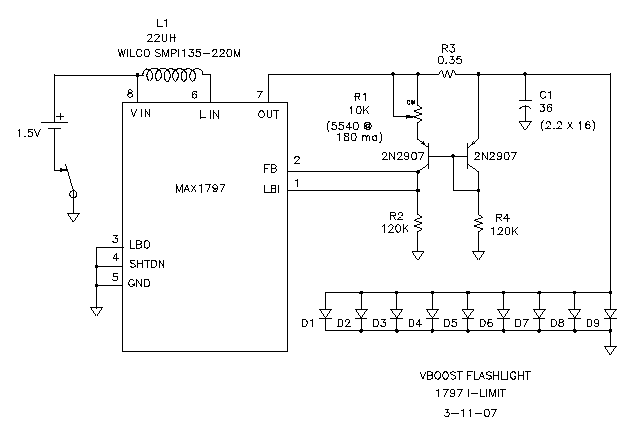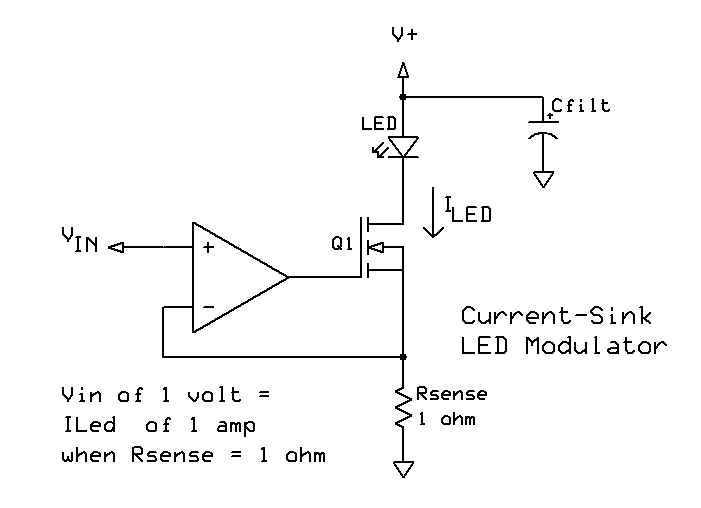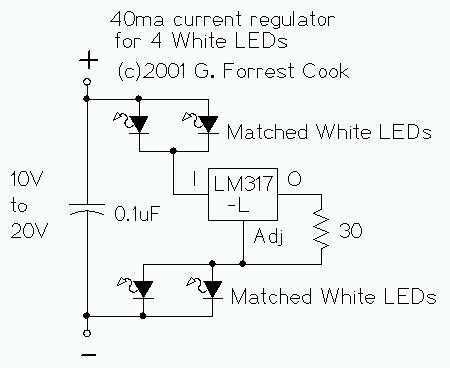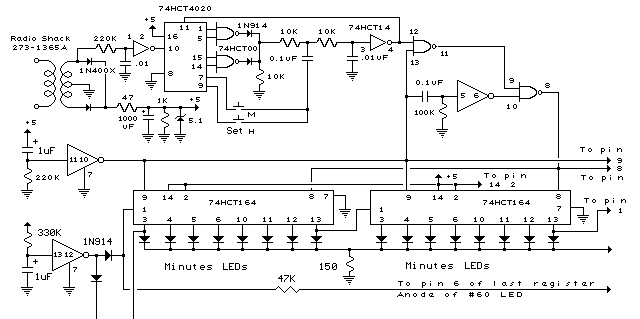
7 Segment LED Counters
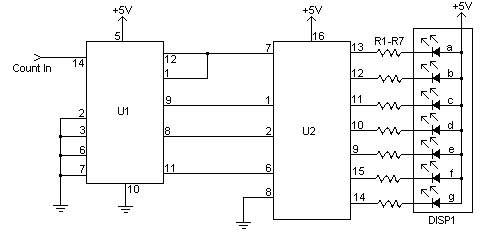
This simple counter can be utilized to count pulses and serves as the foundation for a customer counter, similar to those found at store entrances, or for any application requiring counting functionality. The circuit is compatible with any TTL logic signal and can be easily expanded. Additional digits can be incorporated by constructing additional circuits and connecting the pin 11-6 junction of the 74LS90 and 74LS47 to pin 14 of the 74LS90 in the subsequent circuits. This expansion can continue indefinitely, accommodating as many digits as necessary.
The described counter circuit employs the 74LS90 decade counter and the 74LS47 BCD to 7-segment decoder/driver, facilitating a straightforward method for pulse counting. The 74LS90 is a versatile counter that can count from 0 to 9, while the 74LS47 converts BCD (Binary-Coded Decimal) outputs from the counter into a format suitable for driving a 7-segment display.
To construct the circuit, the 74LS90 is connected to a clock source that generates pulses. Each pulse increments the count displayed on the 7-segment display driven by the 74LS47. The counter can be reset to zero using a reset pin on the 74LS90, allowing for repeated counting cycles.
For expansion, additional 74LS90 and 74LS47 pairs can be added. The connection between the counters is critical; specifically, the output from the first counter (pin 11) connects to the input (pin 14) of the next counter in the series. This cascading arrangement allows the circuit to count beyond a single digit, enabling counting up to 99, 999, or more, depending on the number of cascaded circuits.
Power supply considerations must also be taken into account, ensuring that the circuit operates within the specified voltage levels for TTL logic, typically around 5V. Proper decoupling capacitors should be placed near the power pins of the ICs to mitigate noise and ensure stable operation.
Overall, this pulse counter circuit is a practical solution for various counting applications, providing flexibility for expansion and integration into larger systems as needed.This simple counter can be used to count pulses, as the basis for a customer counter (like you see at the doors of some stores), or for anything else that may be counted. The circuit accepts any TTL compatible logic signal, and can be expanded easily (see Notes). 2. You can add more digits by building a second (or third, or fourth, etc. ) circuit a nd connecting the pin 11-6 junction of the 74LS90 and 74LS47 to pin 14 of the 74LS90 in the other circuit. You can keep expanding this way to as many digits as you want. 🔗 External reference
The described counter circuit employs the 74LS90 decade counter and the 74LS47 BCD to 7-segment decoder/driver, facilitating a straightforward method for pulse counting. The 74LS90 is a versatile counter that can count from 0 to 9, while the 74LS47 converts BCD (Binary-Coded Decimal) outputs from the counter into a format suitable for driving a 7-segment display.
To construct the circuit, the 74LS90 is connected to a clock source that generates pulses. Each pulse increments the count displayed on the 7-segment display driven by the 74LS47. The counter can be reset to zero using a reset pin on the 74LS90, allowing for repeated counting cycles.
For expansion, additional 74LS90 and 74LS47 pairs can be added. The connection between the counters is critical; specifically, the output from the first counter (pin 11) connects to the input (pin 14) of the next counter in the series. This cascading arrangement allows the circuit to count beyond a single digit, enabling counting up to 99, 999, or more, depending on the number of cascaded circuits.
Power supply considerations must also be taken into account, ensuring that the circuit operates within the specified voltage levels for TTL logic, typically around 5V. Proper decoupling capacitors should be placed near the power pins of the ICs to mitigate noise and ensure stable operation.
Overall, this pulse counter circuit is a practical solution for various counting applications, providing flexibility for expansion and integration into larger systems as needed.This simple counter can be used to count pulses, as the basis for a customer counter (like you see at the doors of some stores), or for anything else that may be counted. The circuit accepts any TTL compatible logic signal, and can be expanded easily (see Notes). 2. You can add more digits by building a second (or third, or fourth, etc. ) circuit a nd connecting the pin 11-6 junction of the 74LS90 and 74LS47 to pin 14 of the 74LS90 in the other circuit. You can keep expanding this way to as many digits as you want. 🔗 External reference
